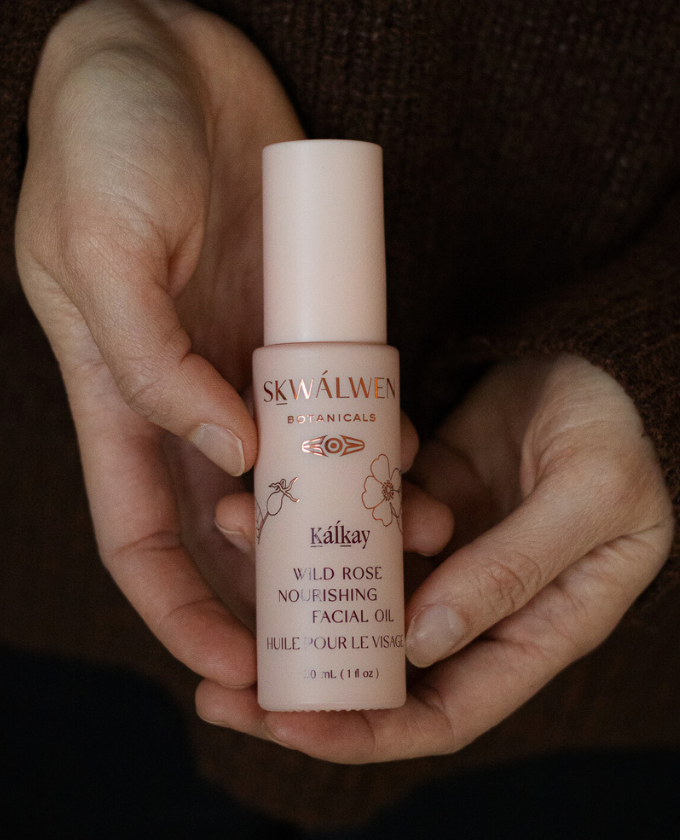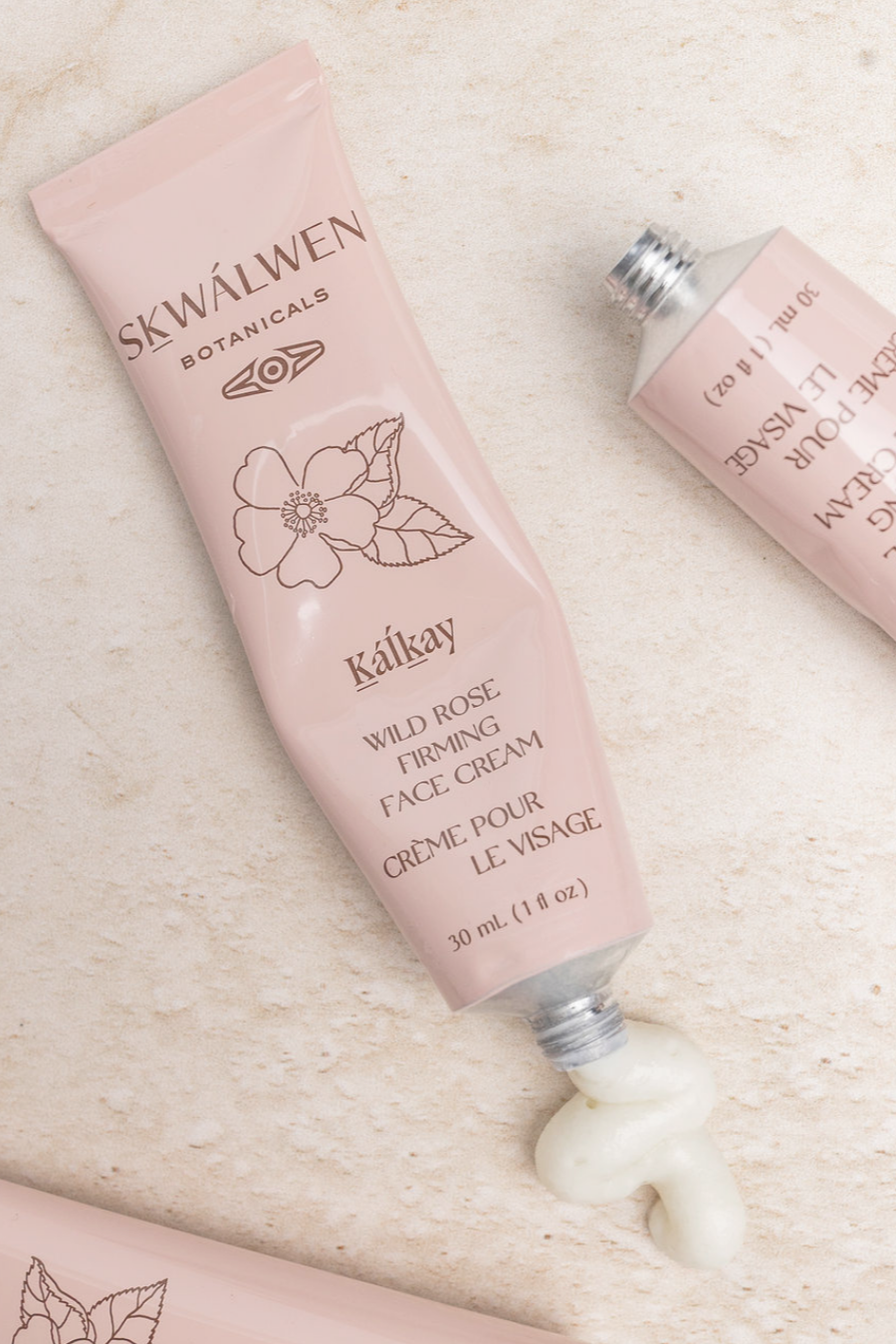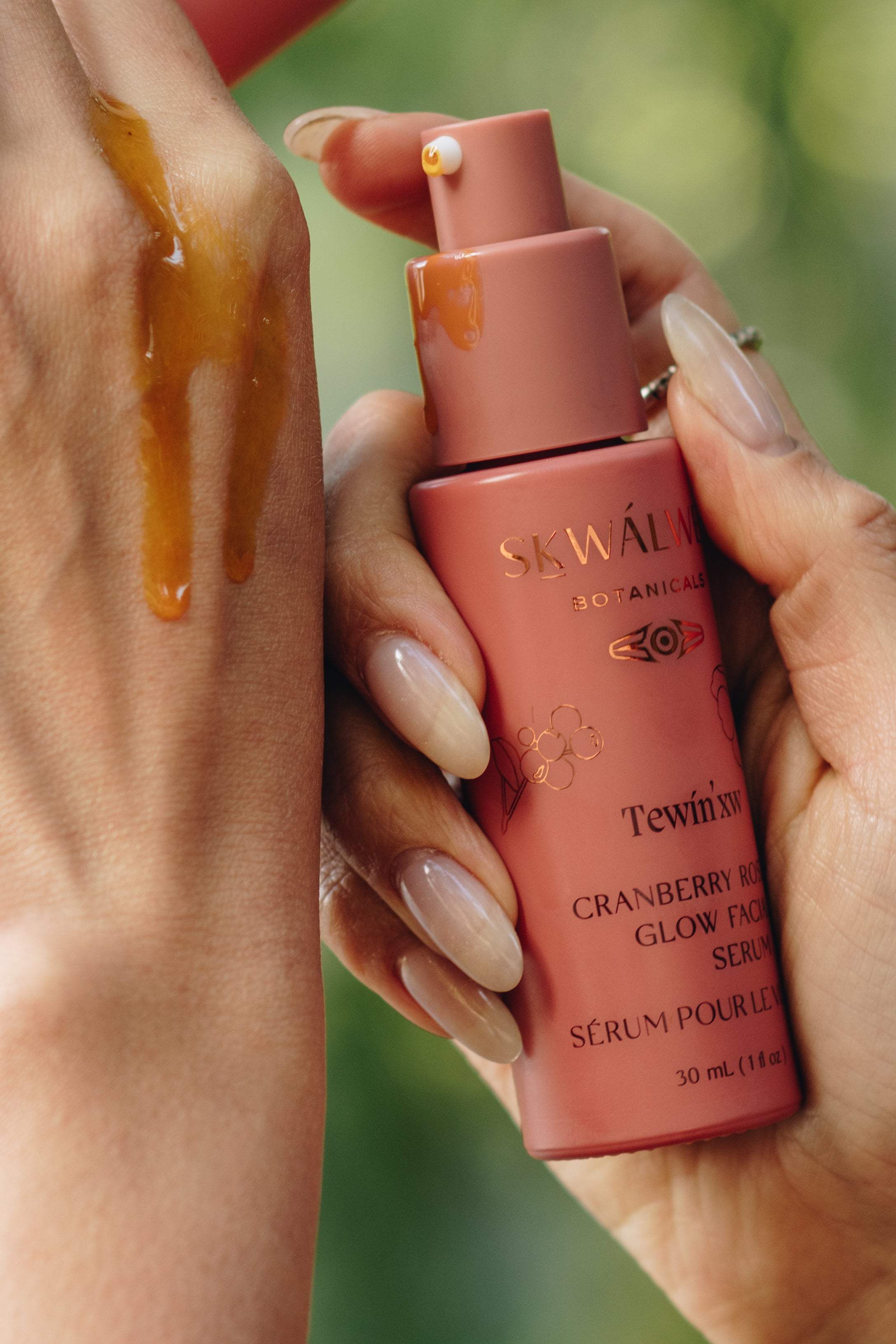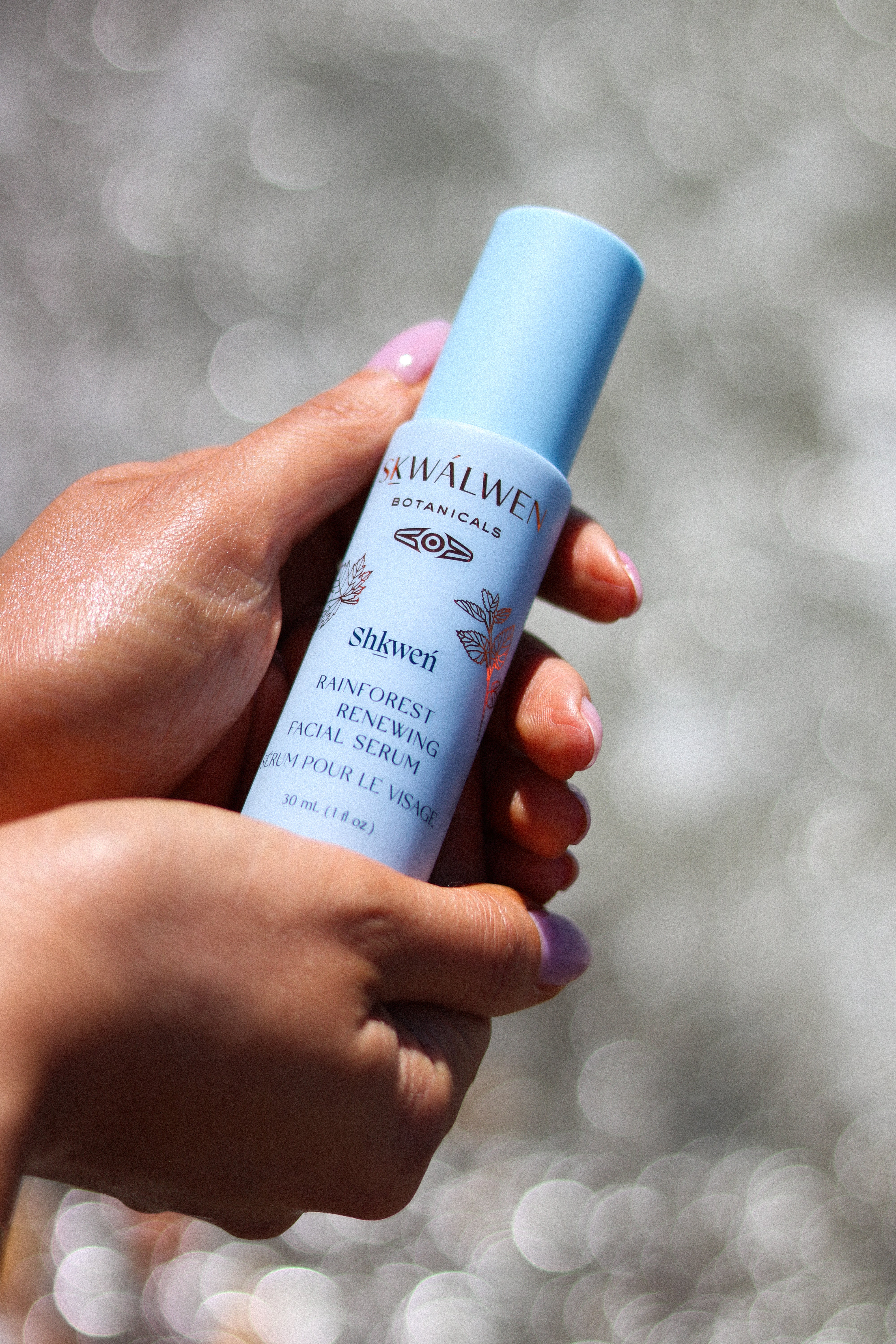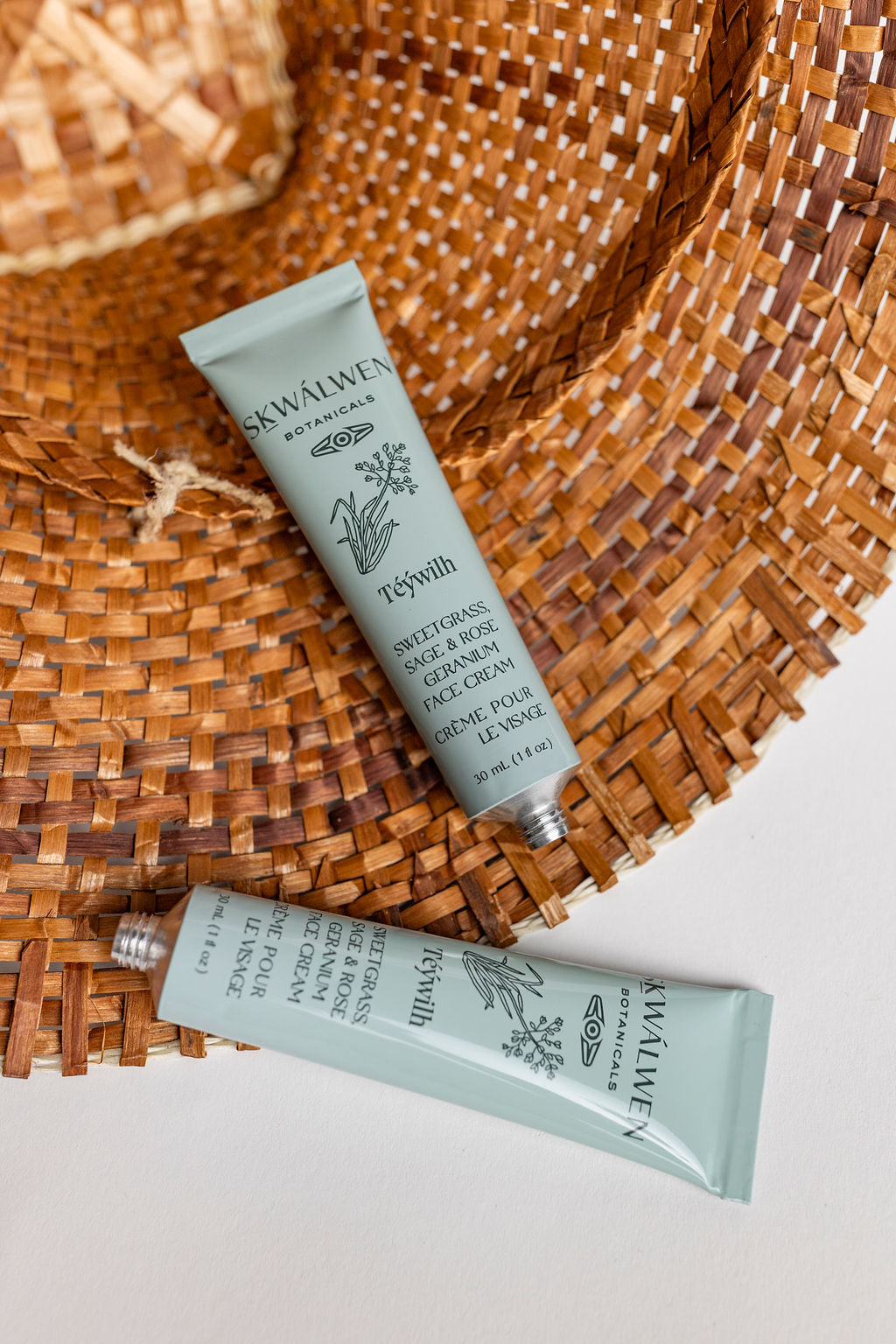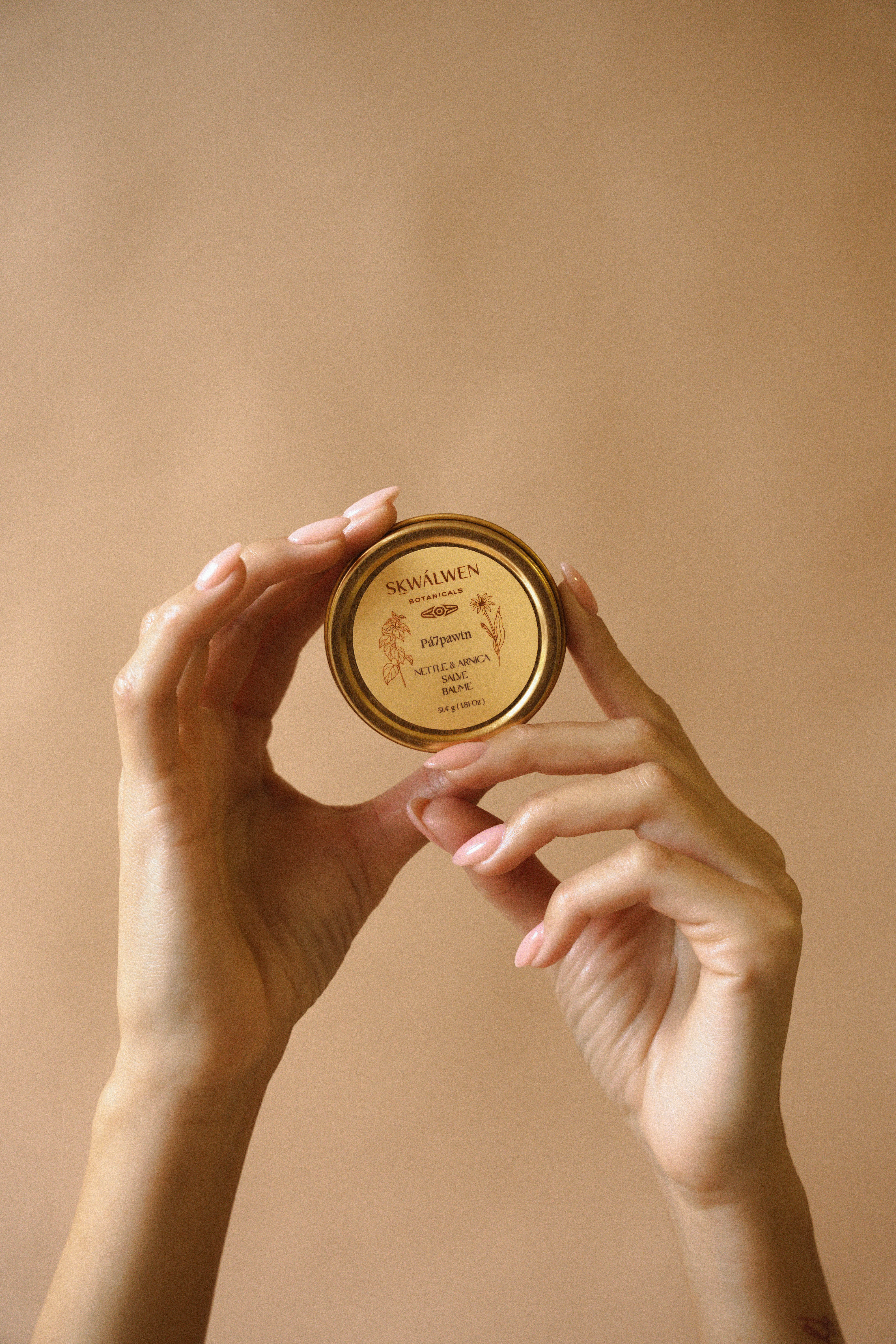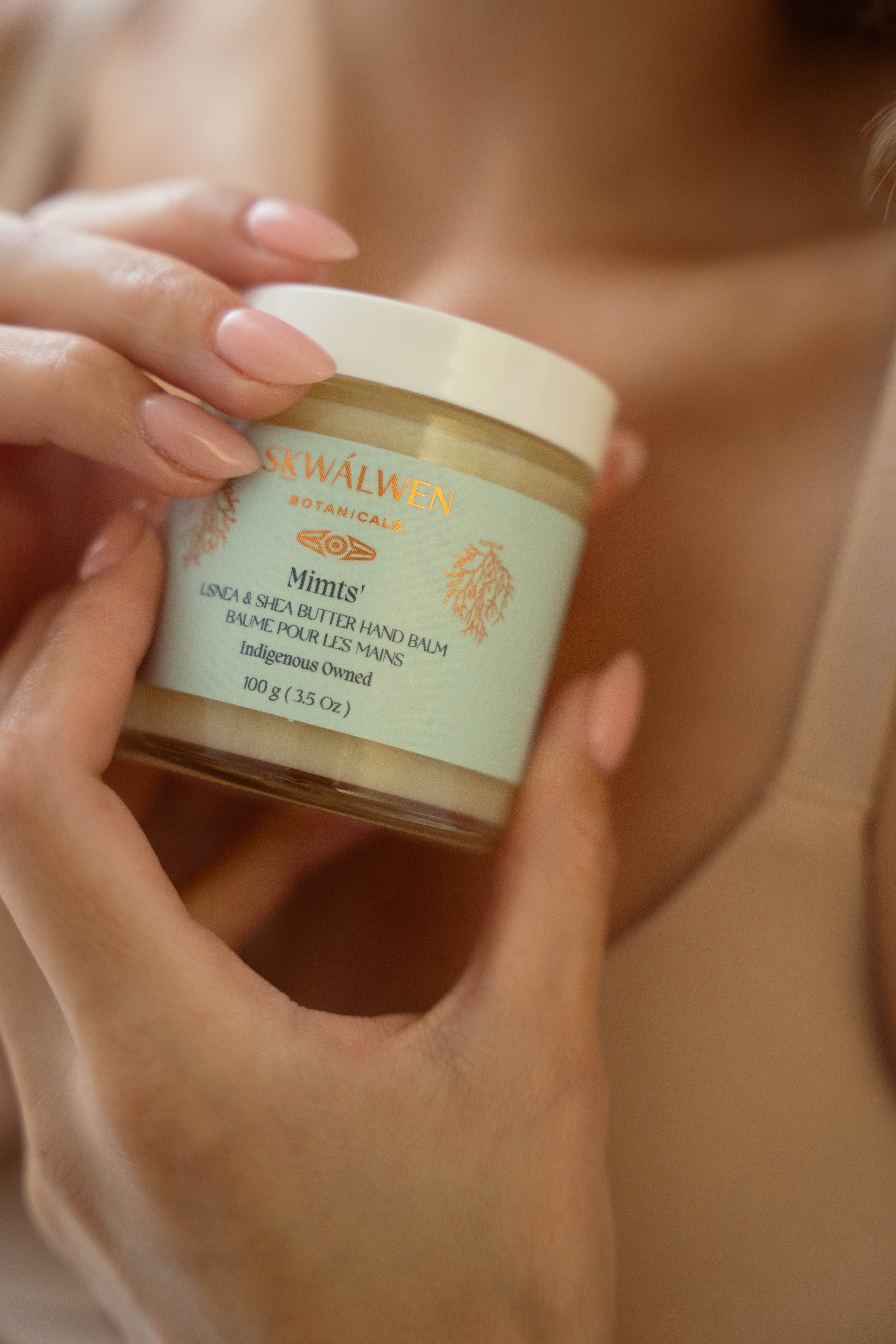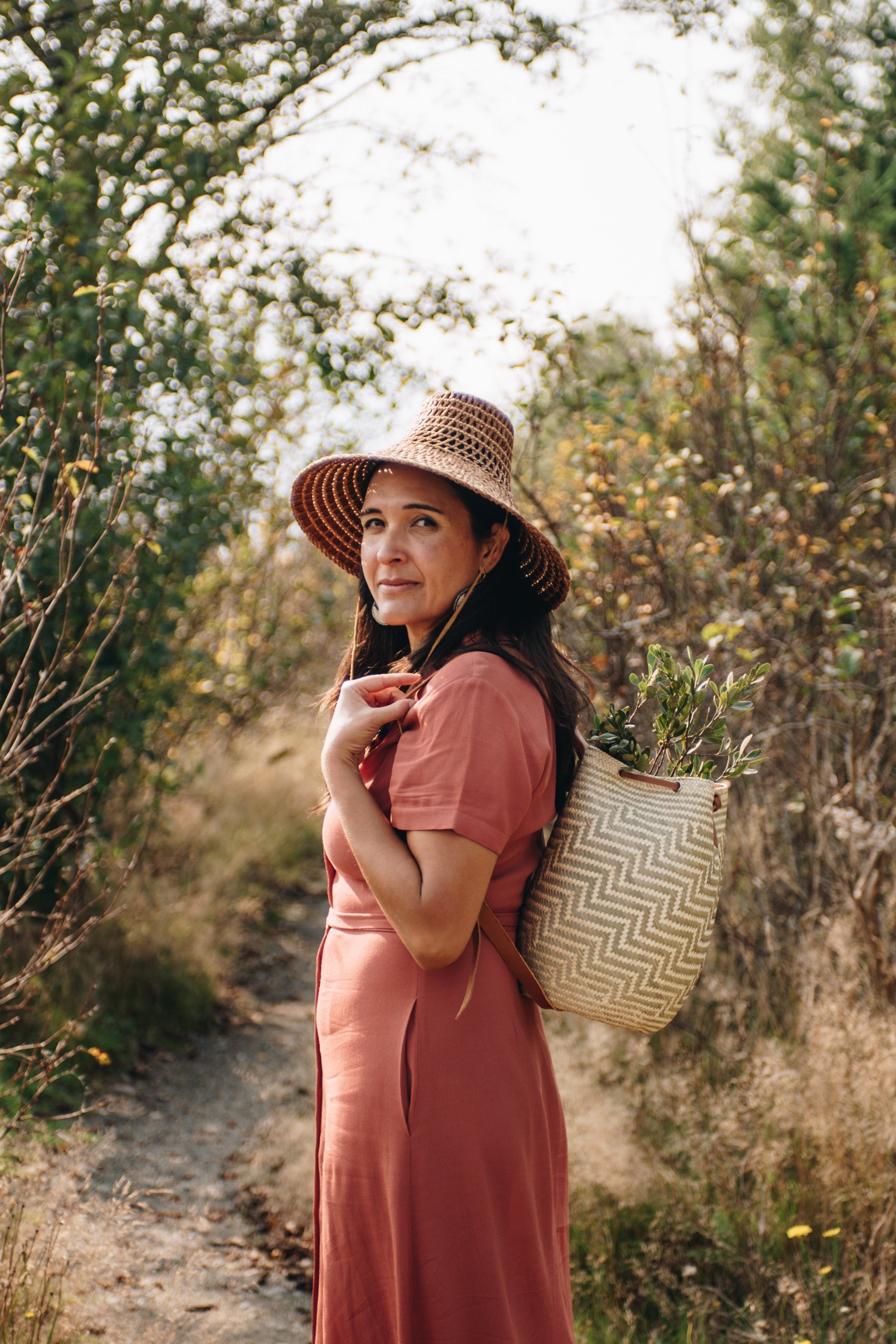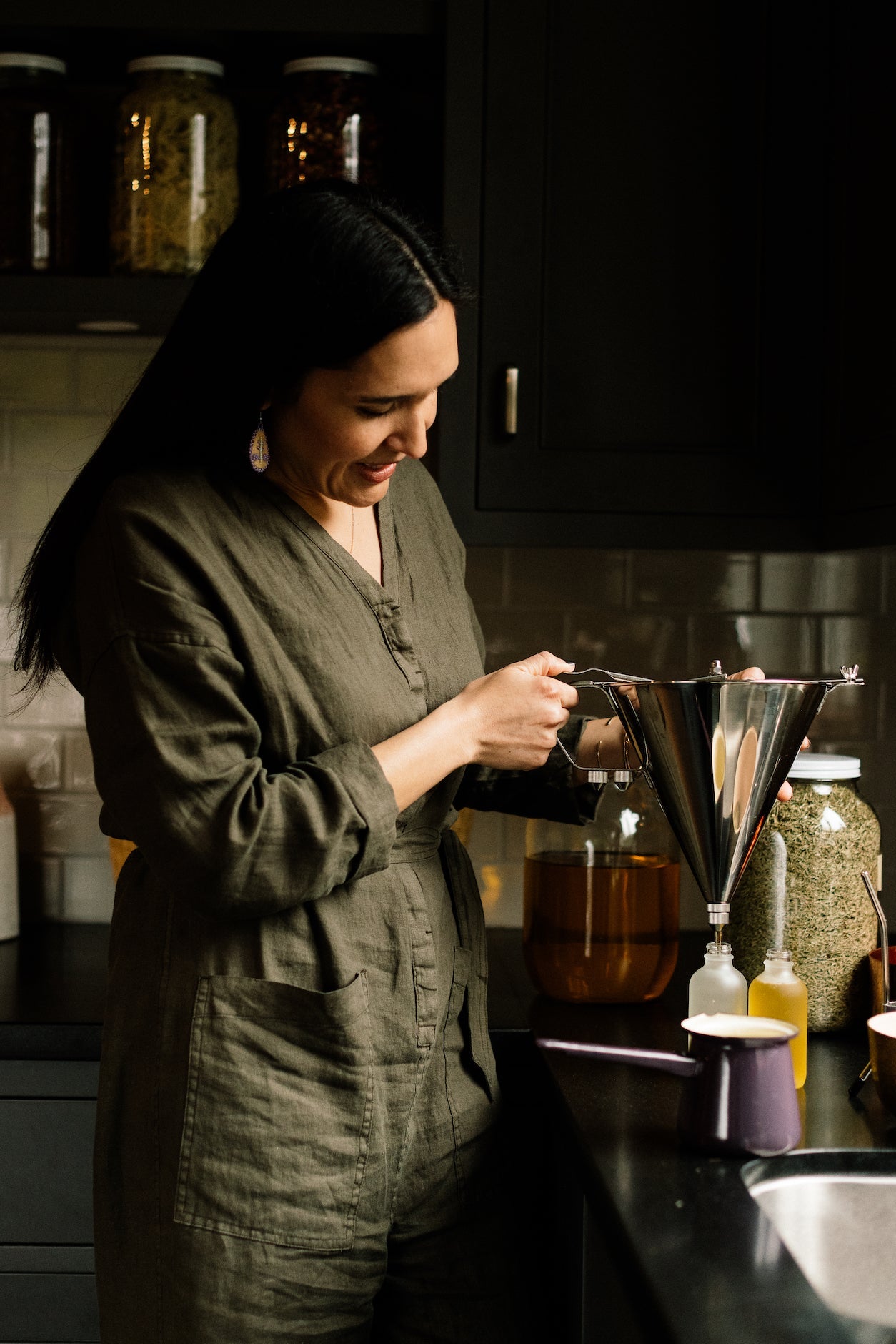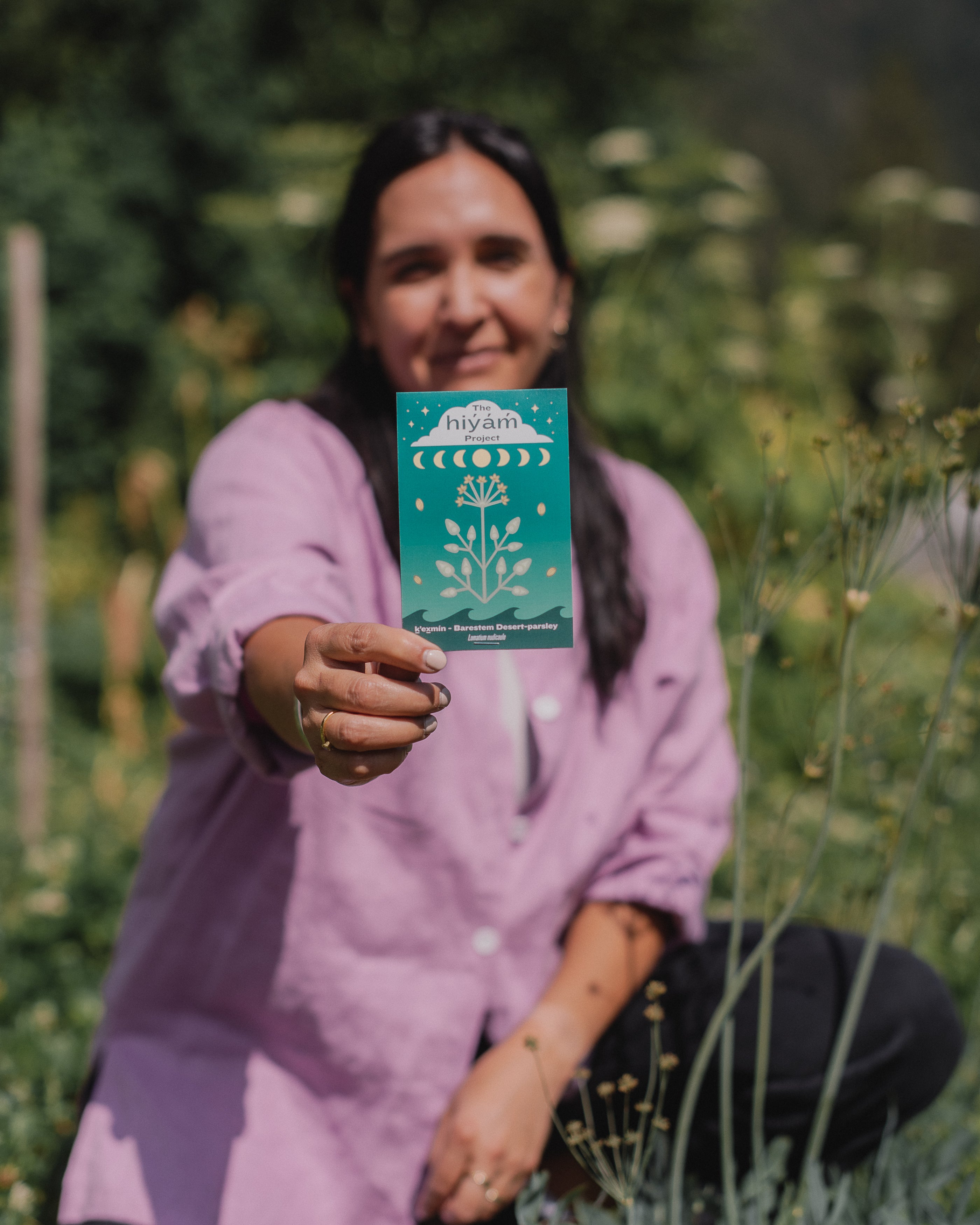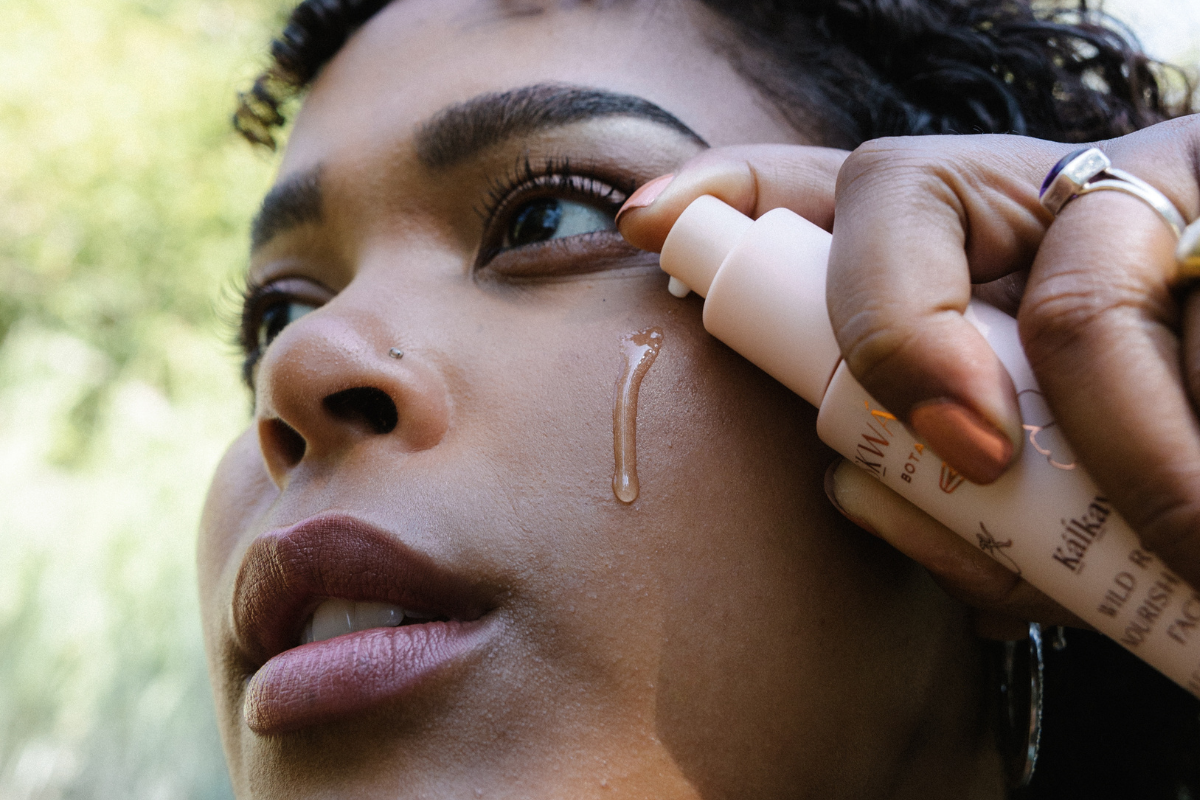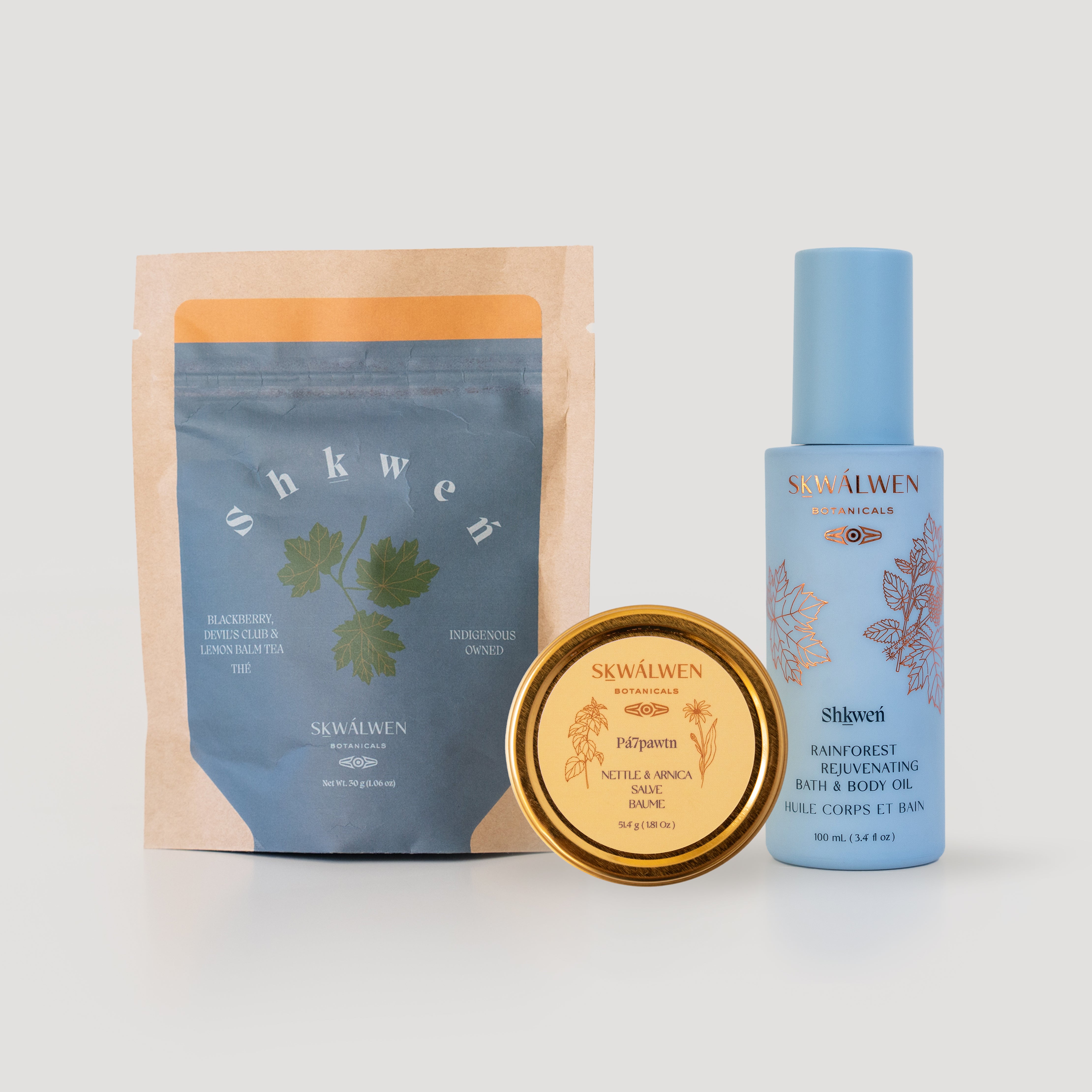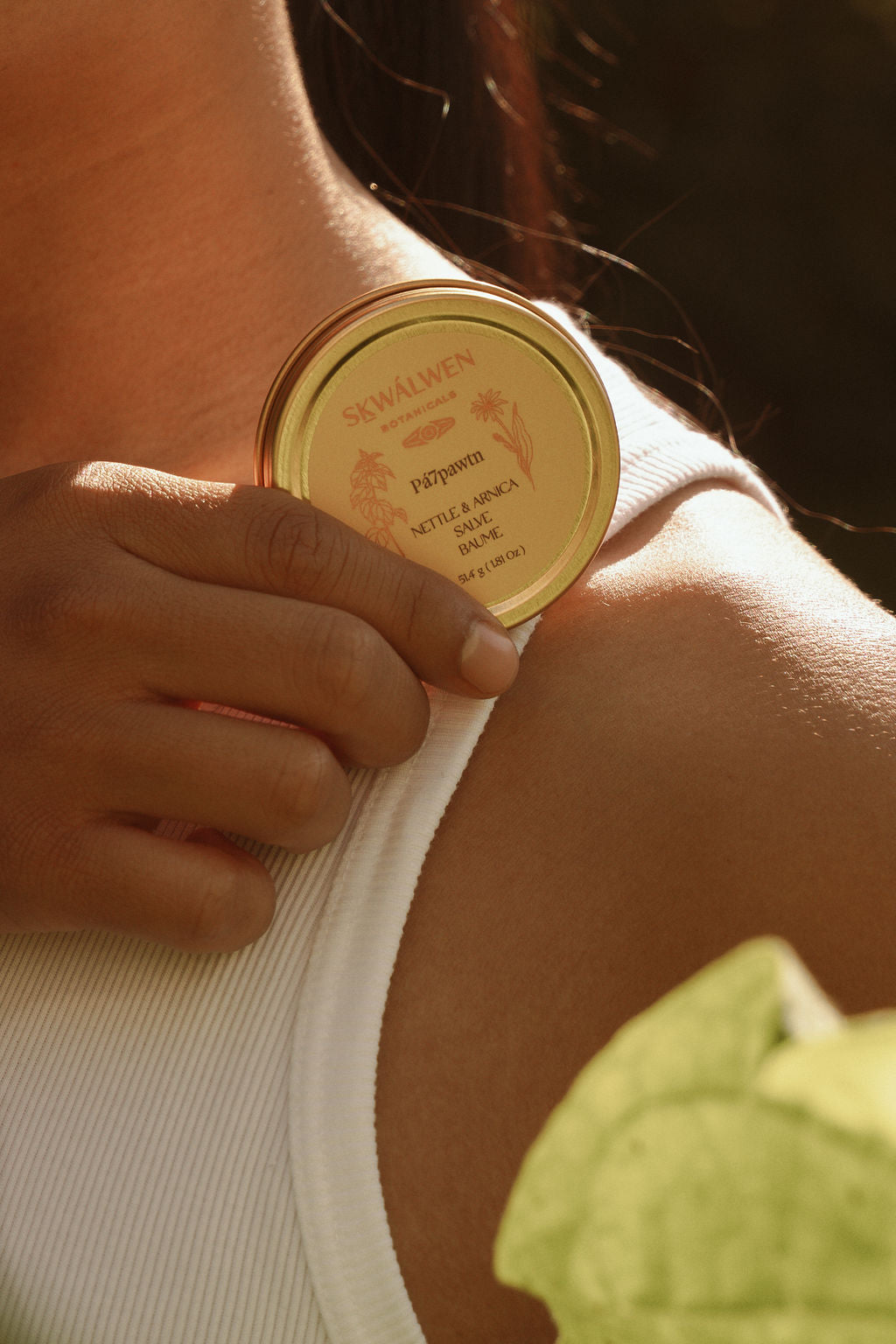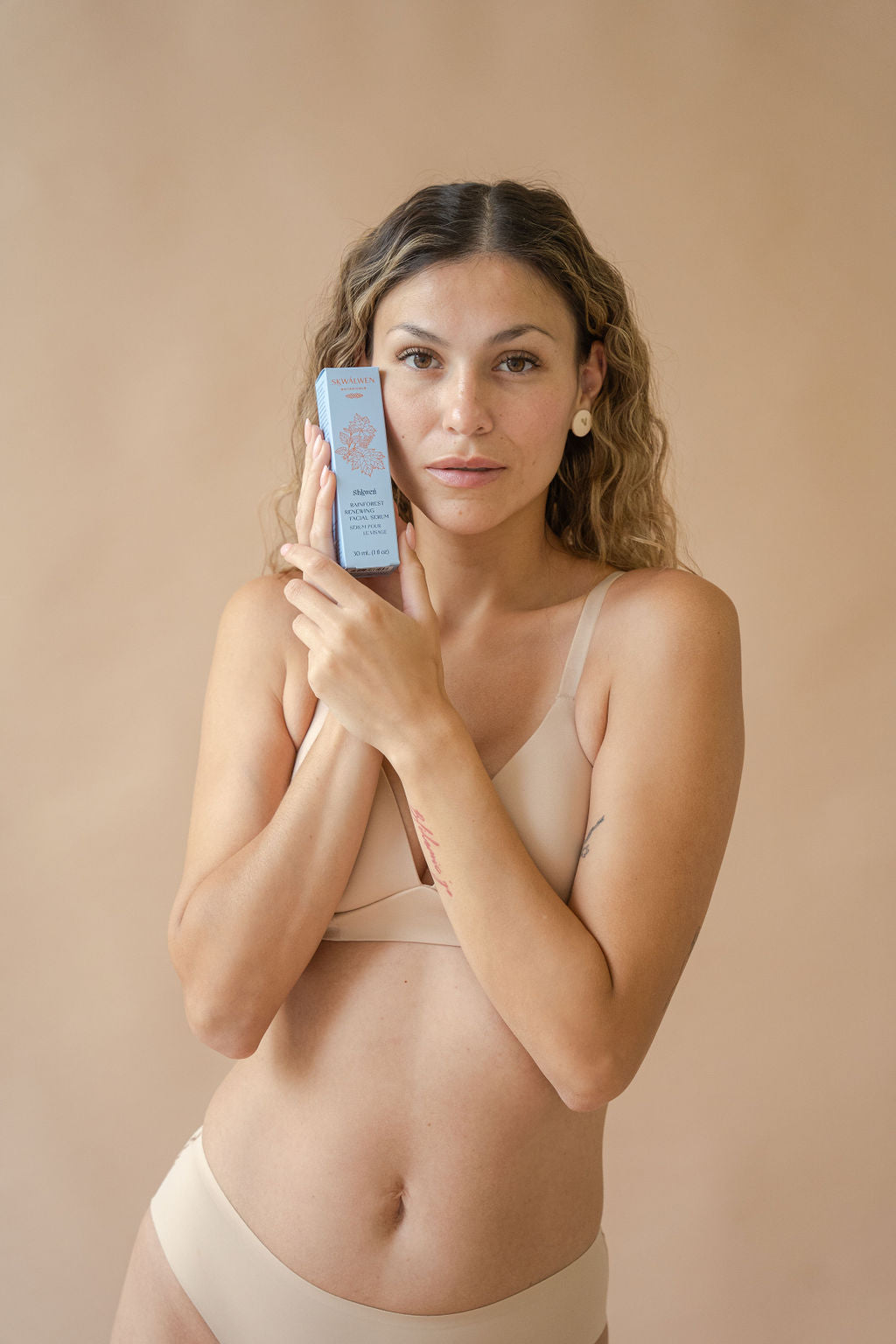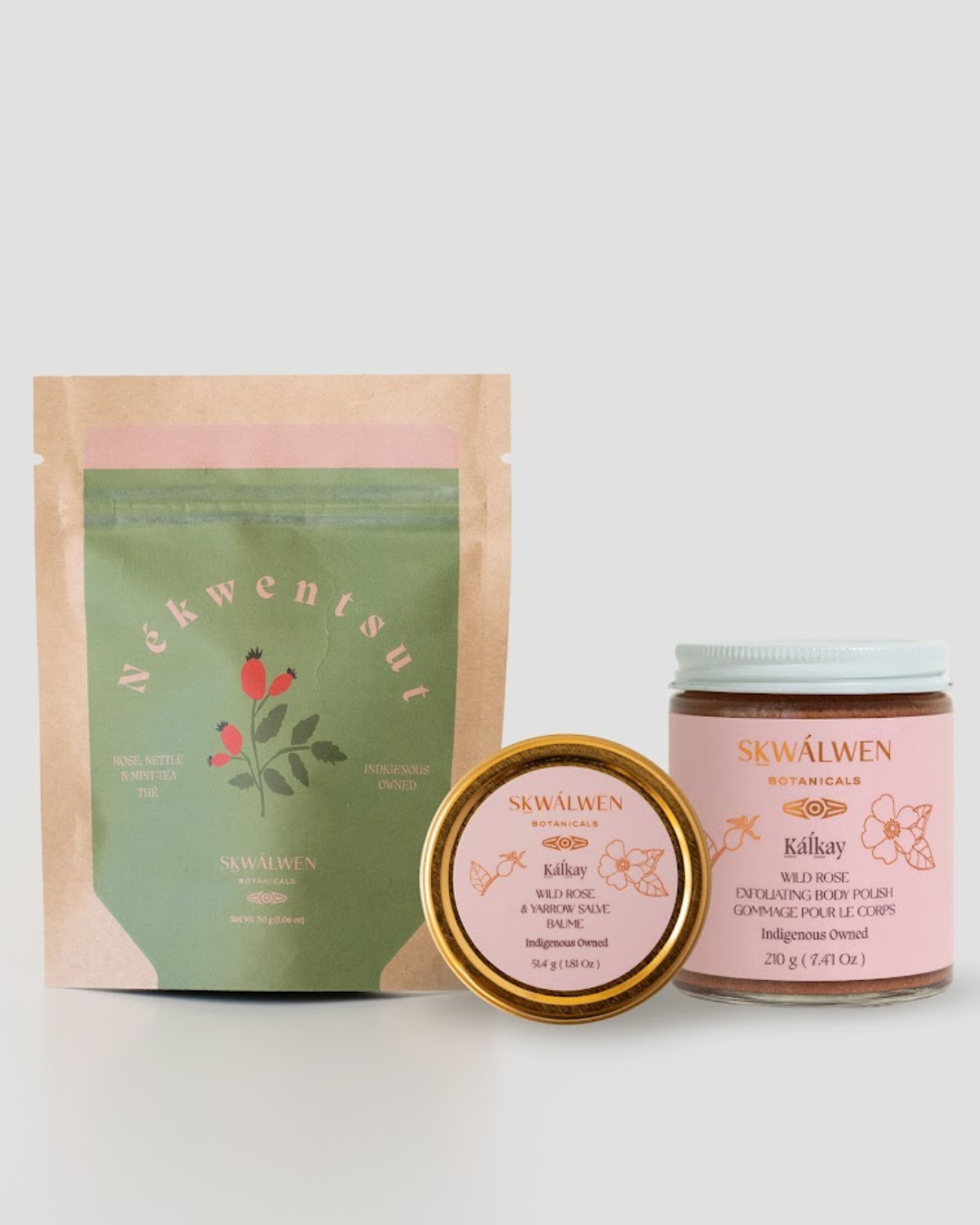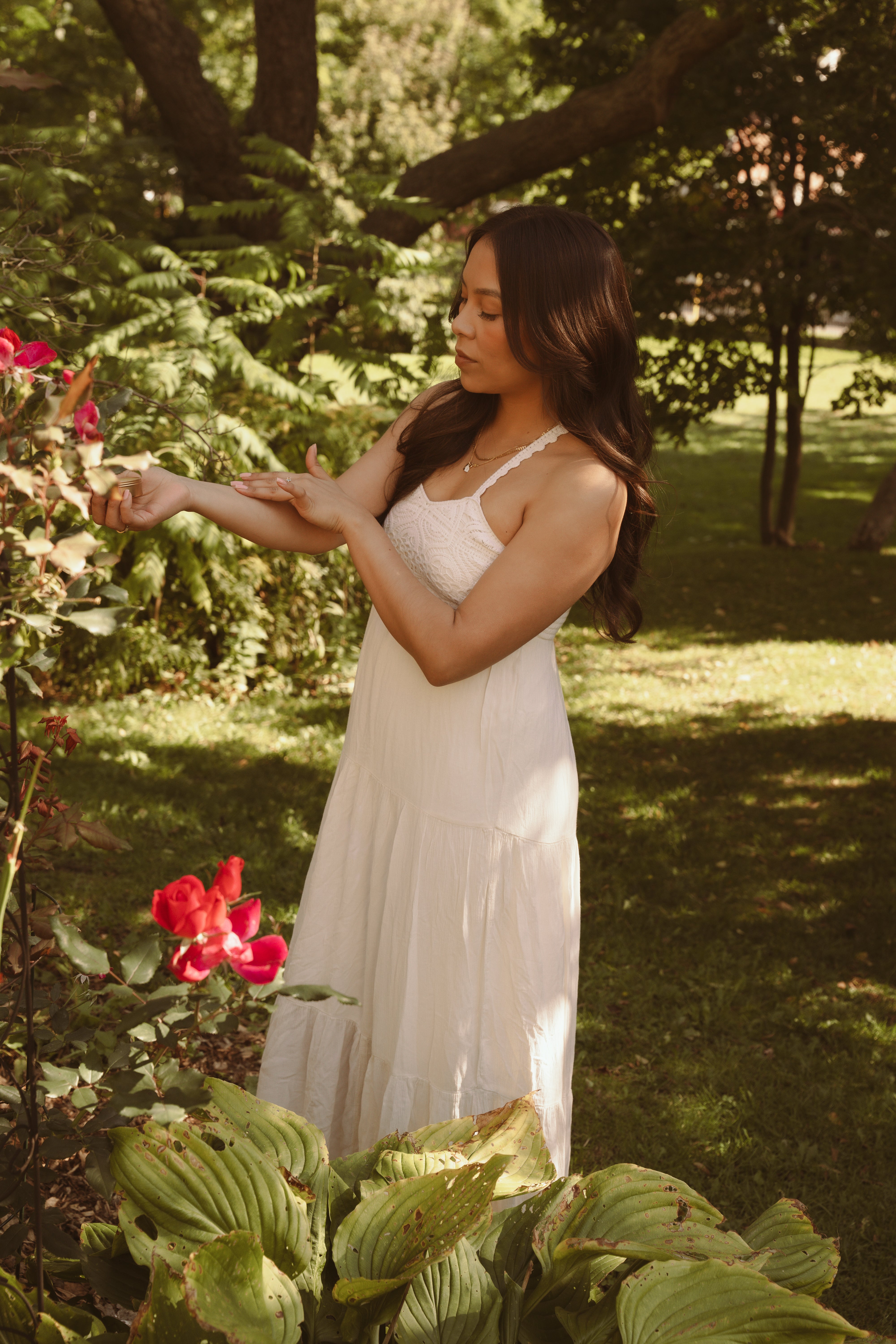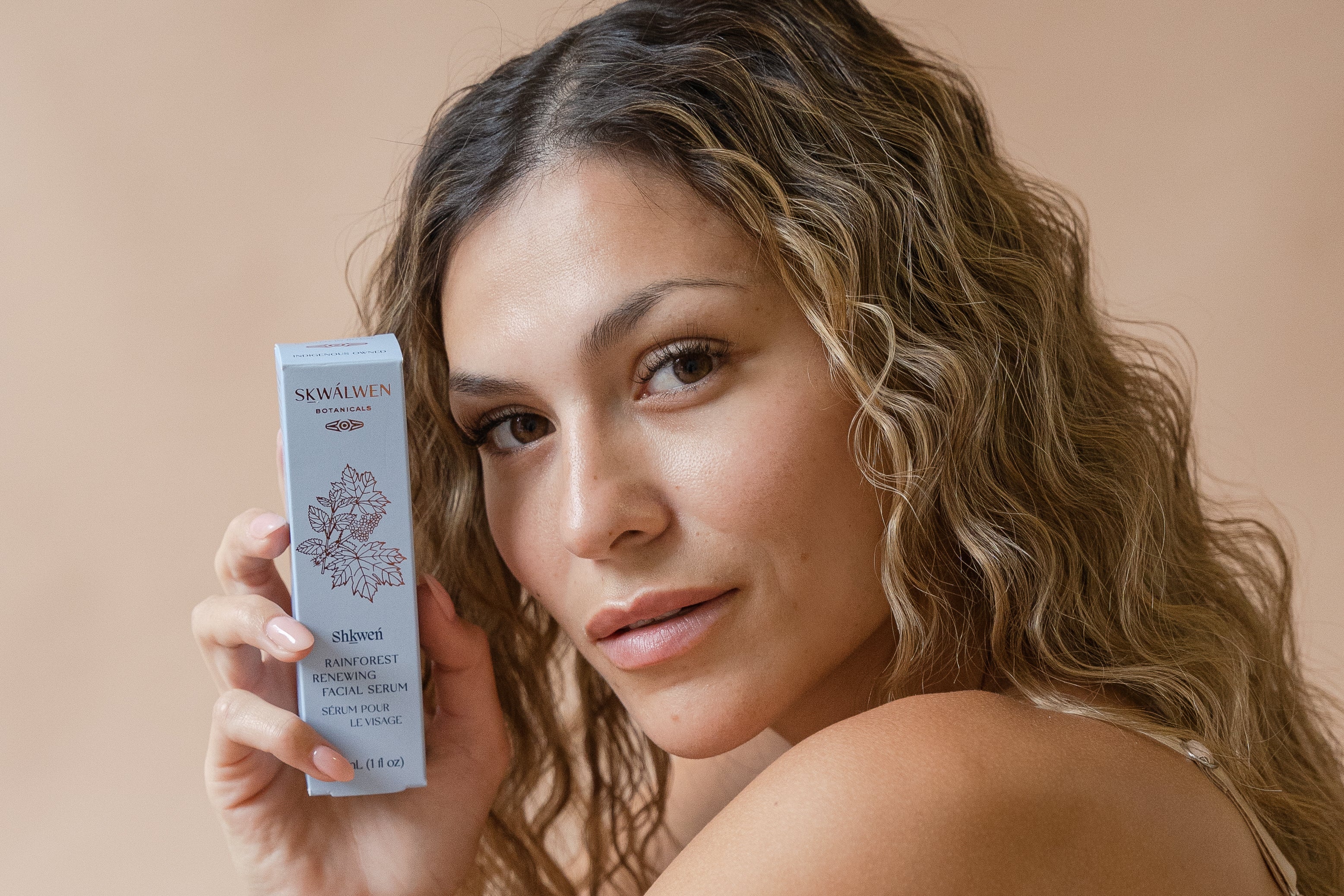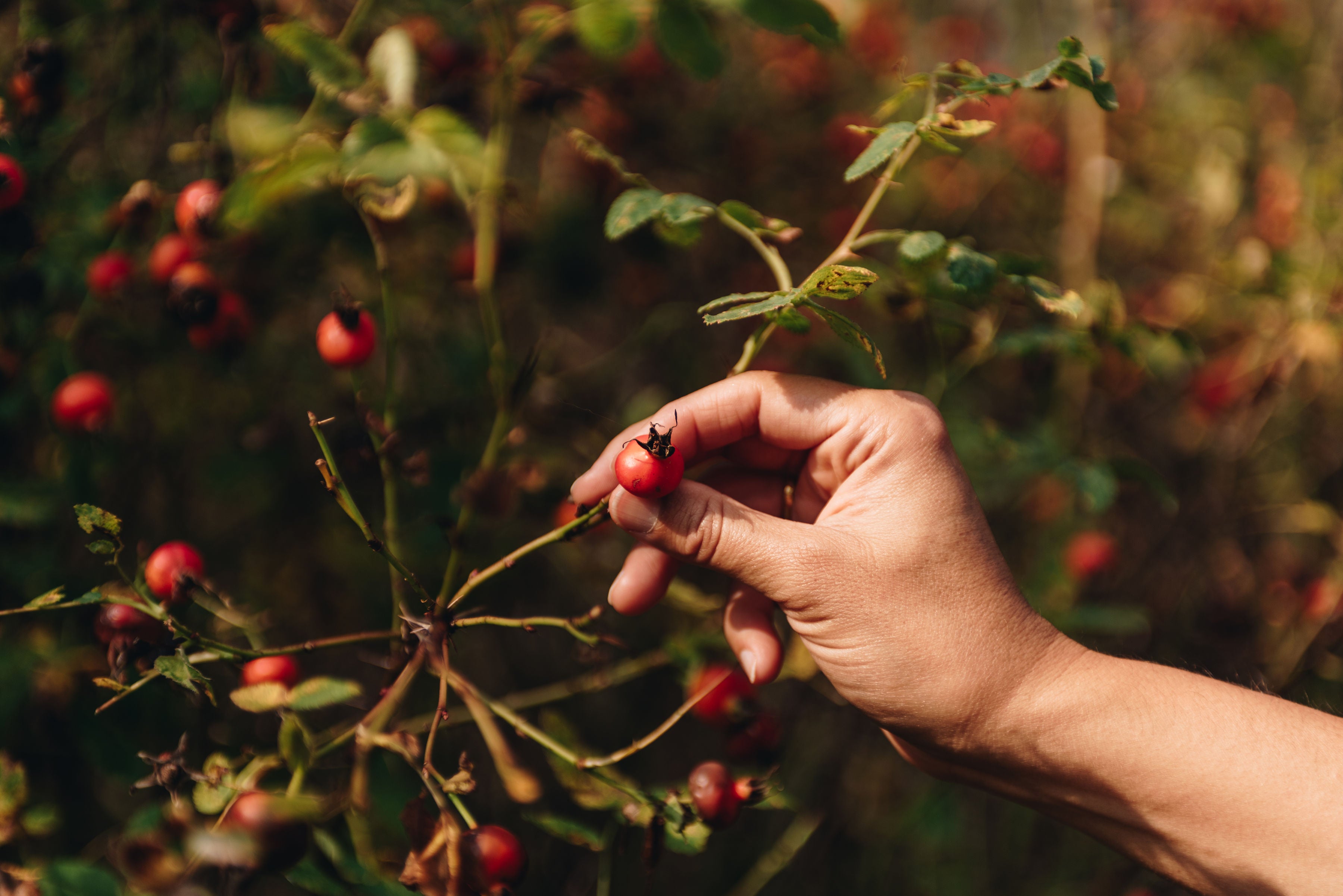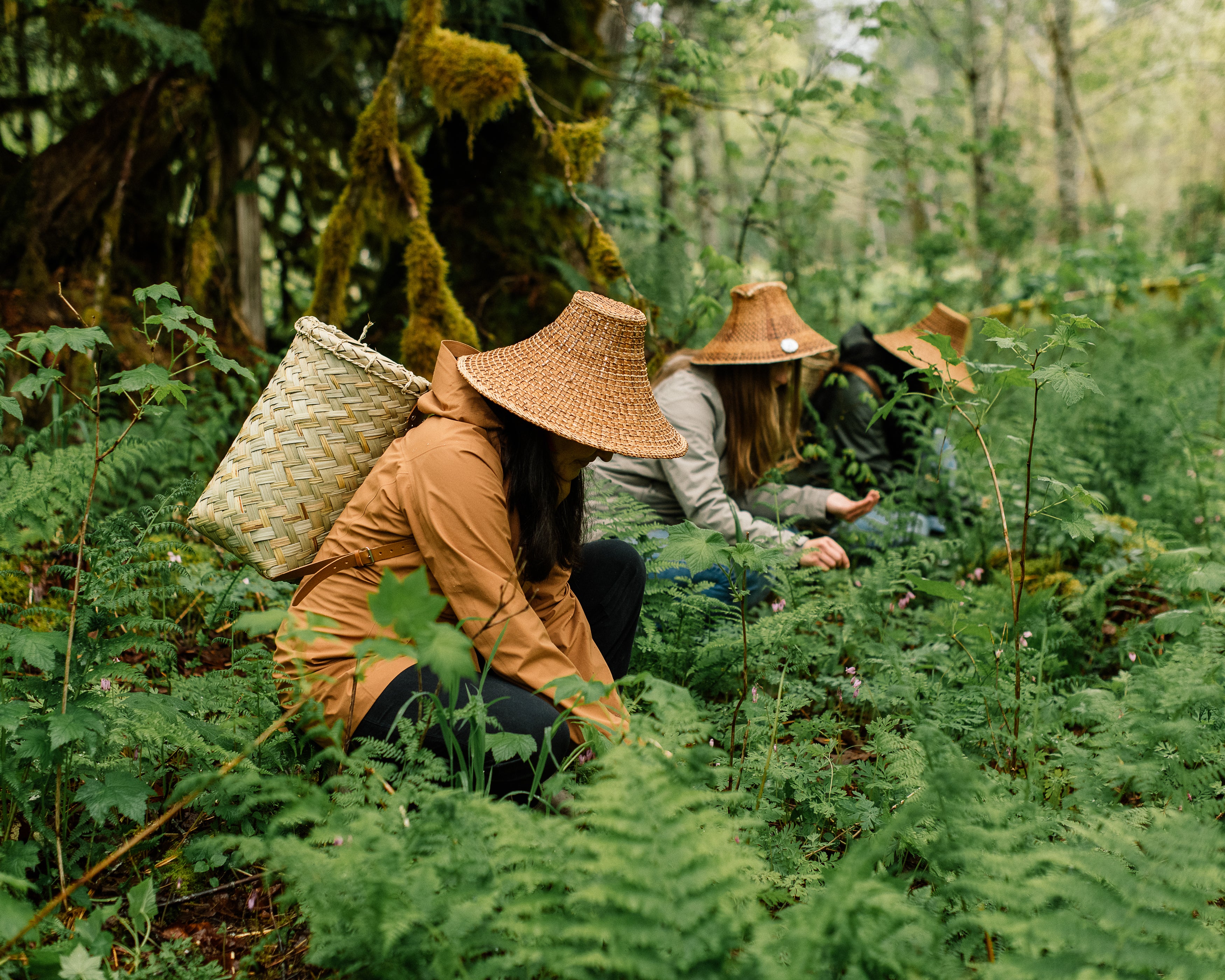Giving back to the land and Indigenous communities is at the heart of who we are.
Through its philanthropic partnerships, Sḵwálwen elevates Indigenous communities and shines a light on the strength and resilience of Indigenous peoples. Sḵwálwen gives back through two key initiatives: Our Ceremony Series and the Hiýáḿ Project.
Indigenous Women Outdoors
We believe that all Indigenous women* deserve the invitation to heal, share and learn. Indigenous Women Outdoor's Mission is to bring Indigenous women together to cultivate strong connections with one another and their environment through movement and shared experiences.
By nurturing a supportive community rooted in cultural understanding and respect, we empower Indigenous women to embrace their identities while embarking on a journey of health and growth.
Through movement and connection, we honour our collective wisdom, celebrate our resilience, and forge pathways towards holistic well-being and empowerment for generations to come.
To date, we have donated to:
The mission of the Downtown Eastside Women’s Centre (DEWC) is to provide a safe, non-judgmental environment for self-identifying women (cis, trans, 2S), from all walks of life, who live and/or work in the Downtown Eastside. To achieve this goal, DEWC provides supportive surroundings with meals, counseling, advocacy, and programs which nurture and empower members.
Encourages healthy living and provides opportunities for positive development for youth in Dawson, ages 16 to 30. Provides daily organized and drop-in programming that allows youth to explore and participate in issues of governance, education, employment, and wellness in a safe and supportive environment.
To bring Indigenous women together to cultivate strong connections with one another and their environment through movement and shared experiences.
The Lytton First Nation is a culturally orientated, secure community with a strong community identity and sense of place. The vision of Lytton First Nation is to have a viable residential community with the foresight, and resources to meet new challenges and opportunities in accomplishing its mission. Striving to build a strong, self-sufficient economy based on the wisdom of our Tl’kemtsin Elders, experience, knowledge of our leaders and membership to serve the best interest of our Nation.
Minwaashin Lodge provides a range of programs and services to First Nations, Inuit and Métis women and children (regardless of status) who are survivors of domestic and other forms of violence, and who may also be suffering the effects of the residential school system. All programs and services are provided in the context of cultural beliefs and values to ensure a holistic approach is used as part of the healing journey.
Cultivating hope through inclusive supportive services and community.
PearlSpace envisions a day when everyone is valued equally and can lead healthy lives, free of violence. PearlSpace is the only service provider in the Sea to Sky Corridor and Stl’atl’imx regions working from an intersectional feminist framework to provide inclusive supportive services for individuals and communities.
All Wet'suwet'en Clans have rejected the Coastal Gas Link fracked gas pipeline because this is our home. Our medicines, our berries, our food, the animals, our water, our culture are all here since time immemorial. We are obligated to protect our ways of life for our babies unborn.
SNIWWOC is a Canadian non-profit organization committed to the empowerment of women. We operate from a holistic and integrated service model that addresses the social, cultural and political realities of immigrant and indigenous communities. Our work is informed by a commitment to reproductive justice. Reproductive justice recognizes that struggles for sexual and reproductive rights is not a singular issue. It has to be linked to wider struggles against oppression (racism, sexism, colonization, immigration rights, income, education, etc). These intersecting oppressions can limit a person's ability to have control over their body.
Indigenous Climate Action (ICA) is an Indigenous-led organization guided by a diverse group of Indigenous knowledge keepers, water protectors and land defenders from communities and regions across the country. We believe that Indigenous Peoples’ rights and knowledge systems are critical to developing solutions to the climate crisis and achieving climate justice.
Coastal Foodways is a support hub for Central Coast community champions who are building food systems resiliency, with the goal to break down the systemic barriers to food security, starting by creating resources and building capacity that make sense for their bioregion and cultural systems.
Outlast Arts and Education is a 501(c)(3) organization that provides filmmaking and media programming to Lakota and Black youth on Pine Ridge Reservation in South Dakota. Outlast was founded in 2015 with the goal of increasing the visibility of Indigenous peoples in the media by fostering the talent and multimedia skills of Indigenous youth so that they can take back the narrative and tell their own stories. In addition to an annual summer filmmaking intensive program, Outlast offers year-round programming including fall media workshops, college tours, college and application assistance.
Stqeeye’ Learning Society is an Indigenous led non-profit organization based on Salt Spring Island, BC in the traditional territory of the Quw’utsun Peoples.
The mission of the Stqeeye’ Learning Society is the restoration and preservation of lands and waters within Xwaaqw’um (Burgoyne Bay Provincial Park). Stqeeye' was created by family descendants, Elders, Knowledge Keepers, Youth, and other like-minded individuals for the common purpose of restoring the land and cultural sharing. Stqeeye’ is committed to preserving the Xwaaqw’um village site in partnership with Quw’utsun mustimuhw (Cowichan people).
KUU-US Crisis Line Society is a non-profit that provides 24-hour crisis services through education, prevention, and intervention services. Their Indigenous Toll Free Crisis and Support Line serves Indigenous communities across British Columbia.
Past Hiýáḿ Projects
First launched in 2021, the Hiýáḿ Project has supported the distribution of these native plant species on Indigenous lands.
From the Aster plant family, Coastal Mugwort,Artemisia suksdorfiis “true sage” in the genus Artemisia. It is an aromatic herb, but gets quite tall and woody. Coastal Mugwort is deer-resistant and fragrant. It blooms most often in June.
Sowing Instructions: Sow in fall or early spring on bare soil outdoors and lightly scratch into soil surface. Grow in full sun to partial shade.Coastal mugwort can be grown in a variety of settings from garden beds to large planters. Try planting in gravelly soil as it does prefer some drainage.Roles for this plant in culture and plant uses is vast. People can use this plant in many applications such as adding to bath water and using in smudge bundles. Cooked with a savoury dish, such as meat, is delicious.
Sarah Rhude @nkwejij_little_sister ~ a Lnu’, Mi’kmaq woman and Indigenous Art and Culture Teacher shares these insights: “Coastal [Mugwort] is one of my most special plant relationships. It thrives in relationship with us. While I use it for many purposes when harvested, I gain the most medicine in relationship with it when it is growing. The strong and beautiful smell of it in the garden or on the beach is distinct and immediately calms me. The thick and outstanding seed branch that comes out the top when it is time, I use for "brushing off" energy when needed. Most often, I hang coastal sage to dry for use in smudge or smoke medicine. I'm always so grateful when I see coastal [mugwort] in their natural habitat. Here in Lkwungen and WSANEC land I find them on the beaches and it is beyond special to see and connect with.”
Stinging Nettle (Urtica dioica) is a tall, rhizomatous perennial that is an important plant for people and also a host plant for several native butterflies.
Range: Throughout the Pacific Northwest, Stinging Nettle is found growing in abundance from Alaska, through British Columbia as far south as Oregon.
Habitat: Found growing in rich, moist soil along streams, rivers, meadows and open forest, Stinging Nettle thrives in disturbed habitats such as village sites, roadsides and barnyards. It grows in full sun to part shade in a variety of moist habitats with rich soils.
Parts of plant used: New spring shoots and leaves
Processing: The stinging hairs of nettle require processing ahead of ingestion. The stinging properties are neutralized by steaming, drying, freezing, blending or heating up in oil or blanching water.
Benefits of Stinging Nettle
Stinging Nettle is rich in chlorophyll, vitamins, minerals, protein, and amino acids. It is considered a super food and a very nutritious spring green. The plant has antihistamine properties that help with seasonal allergies when taken as a tea. When utilized topically, either fresh or dried and infused into oil or tea, the plant carries anti-inflammatory properties that can help with sore muscles and joints. Stinging Nettle is highly antioxidant, making it a nutritious food to consume to support overall immunity and health. It's also also an incredible source of fiber to make strong cordage and the plant can be used to create a green dye.
Stinging Nettle is a very important butterfly plant throughout its range. Many species of butterfly require Stinging Nettle as food for their caterpillars. Butterflies lay their eggs on nettle leaves throughout the spring and summer. When the eggs hatch, the young caterpillars eat the leaves, and then form a chrysalis to mature into adult butterflies.
Butterfly species that depend on nettle include the Satyr Anglewing...
Sustainable Harvest
Each year around late March through to mid-May is ts’exts’ix (Stinging Nettle) harvesting time in Squamish. It is best harvested for eating when the young shoots are less than 1 ft (30.5 cm) tall and still have a purple tinge to the leaves, as they are at their most tender. Nettles are very easy to grow in a garden, which is the most sustainable way to harvest this wonderful plant. The stems are gathered for fiber in September. Along with native butterflies depending on nettle to lay their eggs on the leaves, birds enjoy the seeds of Nettle each fall. As a result, it is important to remember to leave enough of the plant for other non-human life.
*** Warning: Do not harvest nettles for food or tea once they have flowered as they develop gritty particles called cystoliths that can irritate the urinary tract.
How to Grow Stinging Nettle
Stinging Nettle should be planted in fall and can be directly sown by seed onto bare soil in your garden or into containers. Nettle is rhizomatous, meaning it spreads below ground by underground stems. If you don't want it to spread, plant in a container, raised bed, or space bordered by a natural barrier. Stinging Nettle prefers rich soils, so try adding compost or manure to the container. Once mature, Stinging Nettle can be easily divided and moved or shared with others. Early spring is a good time to make divisions.
The lacy foliage and yellow flowers of k’exmin have a special beauty. This species thrives in a wide range of habitats, from dry, open, rocky or grassy slopes, and dunes, to seasonally moist meadows and open forests. K’exmin often grows in traditionally managed camas meadow ecosystems and its presence in these meadows is concentrated on Vancouver Island, Guld and San Juan Islands, Puget Sound, and Willamette Valley. The growing range generally extends from southern BC to California, east to southwestern Alberta, and south to the Great Basin regions in Oregon, Nevada, and Utah.
Growing and timing: As k’exmin is a culturally important plant food and medicine that is difficult to find and harvest due to habitat loss, it's important that you do not wild harvest this plant. If you live in an area where the plant holds cultural importance, a wonderful offering is to grow it in your garden and offer to grow extra for the local Indigenous community. Leaves can be harvested in spring, and seeds are ready in the late summer/fall.
Plant gifts: K’exmin leaves are celery-flavoured, rich in vitamin C, and can be eaten fresh or used to season cooking. The seeds have a multitude of uses, including treating sore throats, coughs and headaches, as well as being burned as an incense for cleansing spaces. This plant is connected to many ceremonial and spiritual practices for Indigenous Peoples.
When in bloom, the pink to magenta flowers are always covered in native bees. Forms tall striking clusters of vegetation through summer by rhizome. Leafcutter bees tend to like the foliage of this plant for their cocoons.
Seed for this species opens again winter and spring!
Planting Instructions: Sow in fall or early spring for germination in the same season.
Plant Information: When in bloom, the pink to magenta flowers are always covered in native bees. Forms tall striking clusters of vegetation through summer by rhizome.Seed for this species opens again winter and spring!
Notes: x̱ach’t is a wonderful Indigenous food, medicine and material plant. The spring shoots, flowers and leaves are edible and can be used to infuse into topical products such as infused oils, toners and creams. In the fall the inner fibres of the plant can be made into a strong twine.
Plant Information: Pollinator friendly, late and long flowering perennial wildflower with small white aromatic flower heads. Yarrow is mostly sun-loving, but can tolerate some shade, some trampling and is deer-resistant. The fern-like foliage is partially evergreen so you can enjoy this plant through winter. Yarrow leaves stay soft and green through the winter making it an excellent lawn replacement that can tolerate seasonal mowing but can be vigorous in good garden soil. It is prized as a cut flower and for its many herbal, edible, and medicinal applications.
Notes: Yarrow seeds have very high viability. Seedlings are fast-growing and have high establishment. This is a great species to try from seed if you are new to seeding or want almost guaranteed success and is a good plant to introduce children to. Yarrow is late flowering so the seed isn’t mature until late summer or into early fall. You can bang the seed heads into a bucket or bag to capture the seed and be prepared to leave them outdoors for many days to observe the insect exodus! Yarrow can be sown in fall or early spring, when sown in fall, expect ample germination with fall rains, but sometimes also another round of germination into spring.
